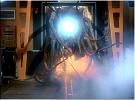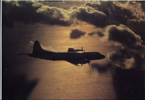mdiehl
Posts: 5998
Joined: 10/21/2000
Status: offline

|
Yer going to have to get your spin consistent, nicks. First you said you were working from Frank, then when contradicted by my observations from Lundstrom, said you were working from that, then when claiming to have quoted Frank, you didn't.
P.612, in quotes here so that one is not confused between what you imagine Frank to have said and what he wrote, is offered here:
"In addressing the reasons for the outcome of the air campaign we must divide it into two parts. The initial and decisive phase extended from the date of the landing to the end of the Naval Battle of Guadalcanal. During this period the Japanese enjoyed almost continuous numerical superiority both in seagoing and shore-based aircraft. Thus, their failure may not be ascribed to a disparity in numbers. What did account for this result was their fundamental error of negligently or recklessly accepting battle under serious handicaps. .. The 565 miles separating the Japanese aviators objectively introduced a series of impediments. It effectively halved the Zero escort force by precluding the use of the model 32 Zero. Second, the long time consuming flights impelled... a routine that simplified the defenders' tasks. Third, the long hauls created excessive wear on aircraft and crews." (Frank 1990:612).
That all is the good news for your claims. "Franks own words" is, in the case of your claim, a bit of a stretch when the only common element between your, err, replies, and his text is the use of one word -- "impediments."
The bad news is of course that you selectively decontextualized one quotation from the rest of the book and offered it up as though it is the only substantive factor that Frank considered in his summation. Your usual "I must be able to find at least one sentence in here that sounds like it supports my argument" rhetorical form. Reading on a bit we get to...
"From the American perspective, several factors stand out. .. Their [the coastwatchers'] warnings, supplemented by radar equipment later, prevented the Wildcat's modest climbing characteristics from fatally undermining the defense of Henderson Field. We nust again note that the thirty-five to forty-minute alerts of impending raids [I will add, WHEN these were available, such a window was not always available as anyone who reads the text will note] allowed just enough time for the Grumman fighters to achieve the altitudes from which they could effectively intercept the omber formations and deal defensively with the Zero escorts." (Frank 1990:612-613).
In short, with decent alert time, combat did not routinely result in the F4Fs at Henderson being caught with their britches down. It gave them a chance to fight on equal terms, position wise.
"Next come the clever dive-and-climb, overhead pass tactis, originated by Major Smith and copied with success by subsequent units, that maximized the Wildcats' capabilities. [My note here: boom and zoom, not the beam defense. And yes, Virginia, American aviators were tactically sophisticated and "experienced" enough pilots to fight the Zero on terms that gave the F4F an edge. That's training and doctrine in action, not a situational condition unique to Lunga.] the sturdiness of Wildcats earns a place on this list [note: that's a comment on the design of the plane, not a situational condition unique to Lunga], and the tireless work of the ground crews and supporting personnel who kept the planes of the Cactus Air Force serviceable under appallingly primitive conditions also merits attention." (Frank 1990:613).
Clearly when he says "appallingly primitive conditions" that is a stark contrast to the comfortable, clean, large, well serviced, threat free complex that was Rabaul. For every Japanese impediment, the defense suffered impediments of equal concern. Pilots being shelled by army and shipborne artillery, infiltrators, and overall a significant logistical disadvantage (relative ot the IJN pilots living in Rabaul).
Now I have elsewhere posted the detailed plane by plane losses of F4Fs fighting A6Ms as derived from the works of John Lundstrom. These were borrowed books not presently in my inventory. Lundstrom himself in The First Team at Guadalcanal on or about page 16 notes that in direct confrontations between F4Fs and A6Ms at Coral Sea and Midway the loss ratio favored the Wildcats. Anyone can feel free to quote the exact phrase here if they want.
You, on the other hand, Nicklademus, have claimed that in the four engagements (Coral Sea, Midway, Santa Cruz and Eastern Solomons) the F4Fs took a drubbing. That was not the result stipulated in either of Lundstrom;s works as I recall. We can look at the tabular results from Santa Cruz and Eastern Solomons for a summary of aircraft lost from carriers in combat. From Appendix 4 (Frank 1990:645), Carrier air group losses in air to air combat: Japanese Zeroes 43, Vals 58, Kates 35. US F4Fs 31, SBDs 11, TBFs 7. Thats a 4:3 ratio favoring the Wildcat in general in air to air combat strictly between aircraft carriers (which means we can ignore all your bullshit about operational circumstances consistently favoring the Allies since these battles were fought at ranges of about 200 miles or less and in circumstances where the F4F was operating near the limits of its tactical radius and the A6Ms were not). I won't extend that to the dive bomber and TBF losses because surely naval AAA must account for a bunch of those. I think we can fairly write off naval AAA vis the A6Ms and F4Fs since they were not employed in the naval attack role.
In land based forces, (aircraft stationed on Henderson vs the 11th Air Flotilla at Rabaul) the losses were 72 Zeroes, 11 Vals, 95 Betties, versus 70 F4Fs, 24 SBDs, 2 TBFs, 13 P400s, and 7 B17s. (Lundstrom 1990:646). Again roughly a 1:1 fighter loss ratio although again, obiously, multiple aircraft lost to multiple causes. Overall the loss ratio was, as I stipulated earlier, greatly in favor of the US. 116 combat aicraft lost vs 178 lost. Considering that the vast majority of Zekes and Betties killed in the campaign were downed by F4Fs, that gives the Wildcat pilots (despite multitasking the job of intercepting bombers and fending off fighters, occasionally with little to no warning) a kill ratio of approximately 167 (Betties and Zeroes) to 70 or about 2.2:1.
Now, being unsatisfied with that, I tabulated and presented in these forums the Wildcats shot down by Zeroes and the Zeroes shot down by Wildcats, because IMO the gross tabular numbers in Frank's Appendix 4 contain some ambiguous cases. To do this I used Lundstrom as a source, counted all F4Fs forced to land as "kills," counted A6Ms observed to crash (not "missing, presumed lost in combat") as kills, and came up with a slightly favorable kill ratio for the Zekes facing VMF (USMC) piloted F4Fs. About 1.1:1. In that ratio you have to consider that not every raid was spotted by coastwatchers, and in some circumstances the positional advantage thus achieved by the Japanese was deterministic. And as is noted by Lundstrom, in carrier-based air to air combat the F4F pilots consistently bested the A6M pilots. Lundstrom in *his* summary noted that much of that was owed to the use of sophisticated tactics such as boom and zoom and, in the final CV battle of 1942, the beam defense, and to superior USN training at deflection shooting. In short, Allied VF pilots had sufficient expertise and training to beat the Zero on its own terms in CARRIER battles (not, as you would like people to believe, solely when the Zero was handicapped by a long duration flight).
We've been here and done this before. Your assertion that I am mistaken is an egregious lie, not merely an error of judgement, because I've posted this information before and you damned well know it. Just as you damned well know that Richard Frank did not characterize US pilots' success at Henderson as predominantly an outcome of unfavorable geographic circumstances pertaining to long Zero flight times.
< Message edited by mdiehl -- 9/15/2005 5:22:26 AM >
_____________________________
Show me a fellow who rejects statistical analysis a priori and I'll show you a fellow who has no knowledge of statistics.
Didn't we have this conversation already?
|
 Printable Version
Printable Version






















 New Messages
New Messages No New Messages
No New Messages Hot Topic w/ New Messages
Hot Topic w/ New Messages Hot Topic w/o New Messages
Hot Topic w/o New Messages Locked w/ New Messages
Locked w/ New Messages Locked w/o New Messages
Locked w/o New Messages Post New Thread
Post New Thread